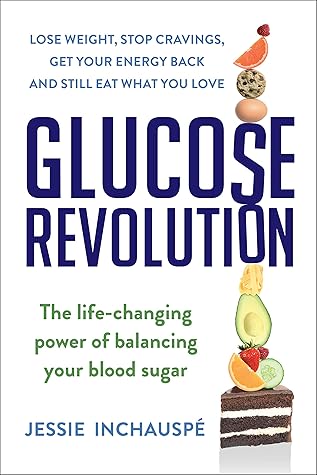More on this book
Community
Kindle Notes & Highlights
Read between
March 5 - March 7, 2023
Until they do, remember that if the food you ate was sweet and it created a glucose spike, it also created an invisible fructose spike, and that’s what makes a sweet spike more harmful than a starchy spike.
When there are too many free radicals to be neutralized, our body is said to be in a state of oxidative stress.
Oxidative stress is a driver of heart disease, type 2 diabetes, cognitive decline, and general aging. And fructose increases oxidative stress even more than glucose alone. That’s one of the reasons that sweet foods (which contain fructose) are worse than starchy foods (which don’t). Too much fat can also increase oxidative stress.
Fructose molecules glycate things 10 times as fast as glucose, generating that much more damage. Again, this is another reason why spikes from sugary foods such as cookies (which contain fructose) make us age faster than do spikes from starchy foods such as pasta (which doesn’t).
unfortunately, fructose cannot be turned into glycogen and stored in the liver and the muscles. The only thing that fructose can be stored as is fat.
What is the right order? It’s fiber first, protein and fat second, starches and sugars last.
Fiber has three superpowers: First, it reduces the action of alpha-amylase, the enzyme that breaks starch down into glucose molecules. Second, it slows down gastric emptying: when fiber is present, food trickles from sink to pipe more slowly. Finally, it creates a viscous mesh in the small intestine; this mesh makes it harder for glucose to make it through to the bloodstream. Through these mechanisms, fiber slows down the breakdown and absorption of any glucose that lands in the sink after it; the result is that fiber flattens our glucose curves.
Foods containing fat also slow down gastric emptying, so eating them before rather than after carbs also helps flatten our glucose curves. The takeaway? Eating carbs after everything else is the best move.
Some artificial sweeteners spike our insulin levels, which mean they prime our body to store fat, encouraging weight gain. For instance, research shows that when people switch from drinking diet sodas to drinking water, they lose more weight (two extra pounds in six months in one study)—without altering the number of calories they eat.
The best sweeteners that have no side effects on glucose and insulin levels are: Allulose Monk fruit Stevia (look for pure stevia extract because some other forms of it are mixed with glucose-spiking fillers) Erythritol
What researchers found was that by adding vinegar before meals for three months, the subjects lost two to four pounds and reduced their visceral fat, waist and hip measurements, and triglyceride levels. In one study, both groups were put on a strict weight-loss diet, and the vinegar group lost twice as much weight (11 versus 5 pounds), even though they ate the same number of calories as the nonvinegar group.
A large 2018 research review looked at 135 people with type 2 diabetes and found that aerobic exercise (walking) after eating decreased their glucose spike by up to 27 percent.


